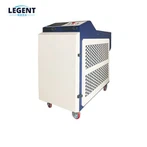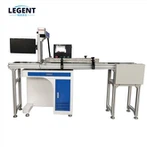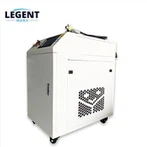Laser composite cleaning is widely used in various industries, including ships, auto repairs, rubber molds, high-end machine tools, rails, and environmental protection. This method effectively removes resin, paint, oil, stains, dirt, rust, coatings, and oxide layers from the surface of objects.
For instance, when dealing with thicker coating materials, using a single laser with high energy output can be costly. However, employing pulse laser-semiconductor laser composite cleaning allows for fast and effective cleaning without damaging the substrate. Additionally, when cleaning highly reflective materials like alloys, a single laser may struggle with high reflectivity. In this case, using pulse laser-semiconductor laser composite cleaning enables faster removal of oxide layers, significantly improving the removal efficiency. The efficiency of paint removal, in particular, is increased by over 2 times.

01 Continuous fiber laser cleaning - remove floating rust on metal surface
The working principle of a continuous fiber laser is that the pump light emitted by the pump source is coupled into the gain medium through a reflecting mirror. Since the gain medium is a fiber doped with rare earth elements, the pump light is absorbed, and the rare earth ions that absorb the photon energy generate energy. stage transition and achieve particle number inversion. The inverted particles pass through the resonant cavity and transition from the excited state back to the ground state, releasing energy and forming a stable laser output. The biggest advantage is that it can continuously emit light.
In actual laser cleaning applications, continuous fiber lasers are rarely used, but there are also a few applications, such as some large steel structures, pipelines, etc. Due to their large size and fast heat dissipation, and low requirements on substrate damage, continuous fiber lasers can be selected.
02 Pulse laser cleaning - cleaning with high surface requirements
Pulse laser cleaning machines use high-energy, high-frequency pulse laser beams to instantly heat and cool the surface of objects, forming instantaneous temperature gradients and thermal stress, so that contaminants and thin coverings can fall off the surface. The principle is that through short-term, high-energy irradiation of laser pulses, high temperature and high pressure are instantly generated, which quickly evaporates or crushes pollutants to achieve a cleaning effect.
Pulse laser cleaning machines are widely used in various industries, such as automobile manufacturing, electronic equipment, aerospace, semiconductor processing, etc. It can be used to remove various contaminants such as paint, oxides, welding slag, etc. Because pulse laser cleaning has the characteristics of high energy and short action time, it is suitable for cleaning objects with high surface requirements.





